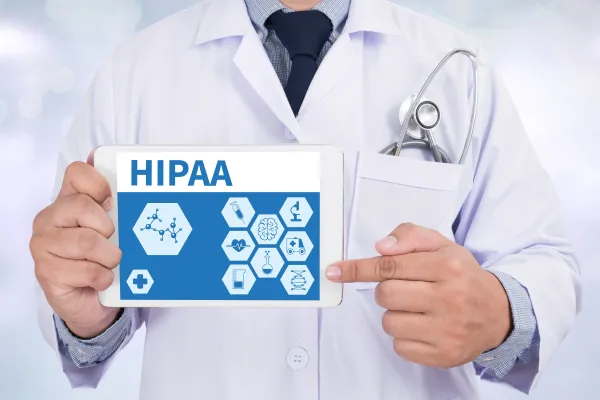Pocket This Primer on Abdominal Pain Coding
Hint: Review ICD-10 guidelines for enhanced knowledge. There are 27 different codes in the R10.- (Abdominal and pelvic pain) group, and anatomical or clinical knowledge can go a long way in helping coders choose the right code every time. Consider these points when you’re coding abdominal pain, and you’ll quickly narrow down your code choices whenever you encounter “abdominal pain” in a provider’s notes. Understand the Significance of Quadrants A number of the R10.- codes describe abdominal pain located in one of four quadrants. To visualize the quadrants, simply imagine the belly button as the middle point of the abdomen. Then remember that the designations “right” and “left” indicate the patient’s right and left sides, not the sides as your provider sees them when examining the patient from the front. Precisely identifying the abdominal quadrant is important as each quadrant houses different major organs, as the following table indicates: Heads up: Sections of the small and large intestines are found in all four quadrants. Choosing the correct signs and symptoms code is not only important for the current stage of patient care, but it could become key should your provider go on to provide a more definitive diagnosis at a subsequent encounter. A diagnosis of R10.11 (Right upper quadrant pain) could provide history for a later diagnosis of K80.- (Cholelithiasis), for example. Define Periumbilic and Epigastric Several R10.- codes use anatomical terms to describe the pain’s position. So, you’ll see terms like “periumbilical” — situated near the navel — in the descriptors for R10.33 (Periumbilical pain), R10.815 (Periumbilic abdominal tenderness), and R10.825 (Periumbilic rebound abdominal tenderness). And you’ll also see the term “epigastric” — the region of the abdomen above the stomach and between the upper right and left quadrants (the hypochondriac regions) — in the descriptors for R10.13 (Epigastric pain), R10.816 (Epigastric abdominal tenderness), and R10.826 (Epigastric rebound abdominal tenderness). Distinguish Tenderness From Rebound Tenderness The R10.- codes are also broken down by severity of pain, with the most painful condition, R10.0 (Acute abdomen), appearing first. From there, ICD-10-CM goes to the more general term “pain” for R10.1- (Pain localized to upper abdomen ...), R10.2 (Pelvic and perineal pain), and R10.3- (Pain localized to other parts of lower abdomen ...); before representing the lowest level of the intensity scale with the R10.8- (Other abdominal pain ...) codes. Example: R10.81- (Abdominal tenderness ...) and R10.82- (Rebound abdominal tenderness ...) use the word “tenderness” in their descriptors. Tenderness on its own “is pain that occurs when pressure is placed on various areas of the abdomen. Rebound tenderness is slightly different as the patient notes the pain not at the application of the pressure but when the pressure is removed,” says Chelle Johnson, CPMA, CPC, CPCO, CPPM, CEMC, AAPC Fellow, billing/ credentialing/auditing/coding coordinator at County of Stanislaus Health Services Agency in Modesto, California. If your provider does document rebound tenderness, that could be a sign of a condition such as K25.- (Gastric ulcer), K57.- (Diverticular disease of intestine), or K85.- (Acute pancreatitis). So, if your provider documents one of these conditions, you won’t use one of the rebound abdominal tenderness signs and symptoms codes. You’ll use the code specific to the confirmed diagnosis instead. And remember: If your physician notes that the patient’s abdomen is rigid — a condition where the muscles in the area feel stiff to the touch and which can be a precursor of appendicitis — you’ll have to look outside the R10.- codes altogether. As the Excludes1 note for R10.0 tells you, you’ll code abdominal rigidity with a code from R19.3- (Abdominal rigidity). Code Colic Based on Age Colic coding depends on the patient’s age. As the Excludes1 note for R10.83 (Colic) tells you, you will use R10.84 (Generalized abdominal pain) for adults and children over 12 months old. That means R10.83 is reserved for infantile colic, as one of the code’s synonyms tells you. It’s OK to Use an R10.- Code Sans Definitive Diagnosis While ICD-10 Official Guidelines, Section IV.H, tells you not to code diagnoses “documented as ‘probable,’ ‘suspected,’ ‘questionable,’ ‘rule out,’ ‘compatible with,’ ‘consistent with,’ or ‘working diagnosis,” or other similar terms indicating uncertainty,” you can reach for an R10.- code if your provider has documented abdominal pain in the note. Why? Guideline IV.H goes on to tell you to “code the condition(s) to the highest degree of certainty for that encounter/visit; such as symptoms, signs, abnormal test results, or other reason for the visit.” Or, to put it another way, “even if the provider has ruled out a definitive diagnosis, there will still be findings or symptoms in the note that you can use,” notes Melanie Witt, RN, CPC, MA, an independent coding expert based in Guadalupita, New Mexico. So, you can use R10.0 with certainty, for example, if the note indicates severe abdominal pain with abdominal rigidity but with appendicitis ruled out.





